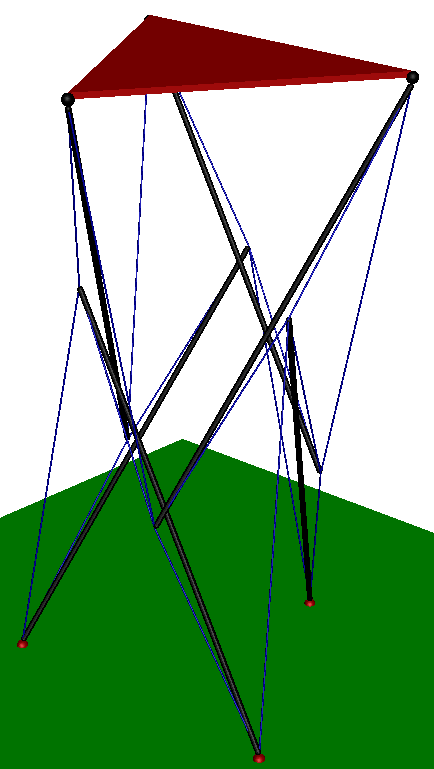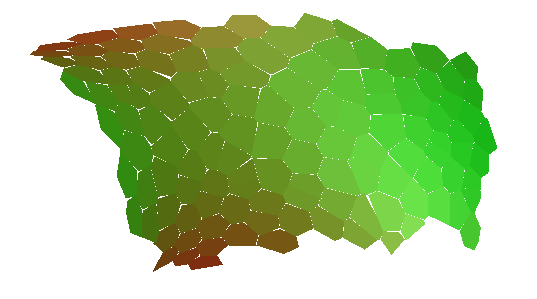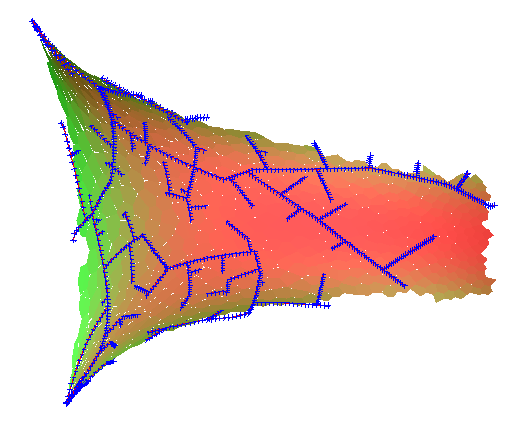|
tower3D.tens File Reference Detailed Description
A two-level symmetric tensegrity tower. The symmetry constraints only leave two degrees of freedom. This is a good example of a complex structure whose equilibrium manifold can be easily analyzed with the CuikSuite. Moreover, this structure has been extensively analysed by C. Sultan (and co-authors) who provided analytical expressions for the lengths, rest lengths, compressions, and tensions of all the structure elements in function of two parameters (namely, the two director angles of one of the lower struts). Such expressions can be found for instance in
These expressions are replicated (and corrected :) at the top of this file. They can be used to generate an initial solution point for this problem from which to start the numerical analysis of the whole equilibrium manifold. Given this point (stored in the tower3D.tens file) we can build the atlas executing Note that the atlas expand over all the equilibrium manifold reachable from the initial point and avoiding self-collision. Once the atlas is computed we can evaluate the energy all over the equilibrium manifold:
end then plot and visualize the equilibrium manifold
You will get a plot like this 
This is not the same plot as that shown in the paper by C. Sultan et al. because the equations generated by the CuikSuite do not include the parametrization variables used in this original paper. To obtain exactly the same plots we have to explicitly generate the equations: This generates a file examples/Tensegrity/tower3D.cuik that can be edited adding the required variables:
We also have to add the equations relating these new variables with the existing ones. The tower3D_ext.cuik already includes these modifications. The tower3D_ext.links file is a modication of the tower3D.links where we added the value for the alpha and delta variables to the original solution point. Using these files we can replicate the figures in the paper by C. Sultan et al. First, we generate the atlas
and then we can plot it the (delta,alpha,h) space executing
To replicate Fig. 6 (the equilibrium manifold compression on struts) in the paper by C. Sultan et al. execute
You will get a plot like this 
Observe that in the bin/cuikworldforces commnand we use tower3D.tens as a first parameter and not tower3D_ext.cuik. In the later there is no semantic information about which variables are force variables and which are not. Since tower3D_ext.cuik is basically the cuik file derived from tower3D.tens (we just added a couple of variables AT THE END OF THE FILE!) the solutions for tower3D_ext.cuik are "compatible" with the tower3D.tens file. The instructions to replicate the rest of plots in the paper by C. Sultan et al. are given at the beginning of the tower3D_ext.cuik file. The steps are basically the same, just using a different force to give the color to the atlas plot. To generate an RRT over the equilibrium manifold follow this steps
You should get a figure like this one: 
Note that the random seed is different at each execution and thus the plot will not be exactly like the one shown here. Definition in file tower3D.tens. |
Follow us!